Table of Contents
Introduction
Learning Irrigation Systems
Efficient water management is the foundation of modern agriculture. Irrigation systems are important tools that allow farmers to supply water to plants in a precise and regulated manner, yielding maximum growth and yield.
Traditionally, flood or furrow irrigation have been used and usually waste water, lead to soil erosion, and create uneven growth in crops.
These are the same methods being employed today in the form of the sprinkler irrigation system and drip irrigation system, which have revolutionized horticultural activities from managing such drawbacks at the cost of water resources.
The systems are manufactured based on the individual water requirements of various crops, landscapes, and soils, thus becoming central to small- and large-scale agricultural operations.
The Growing Significance of Water Conservation
With the world’s growing population and decrease in freshwater resources, efficient irrigation systems are no longer a luxury but a necessity. Water deficiency, unpredictable rainfall, and global climate changes have rendered regular irrigation a global issue of food security.
By embracing such innovative methods such as the sprinkler system that simulates rainfall to provide water uniformly and the drip irrigation system that delivers water to the plant roots, agriculturalists enjoy vast crop yields, soil condition, and utilization enhancement.
These irrigation systems not only save water but also increase nutrient absorption, reduce plant disease, and facilitate sustainable farming. Real-Life Examples
For example, in India’s Rajasthan and Maharashtra states where it rains very infrequently, farmers have been able to use drip irrigation methods to grow high-value crops such as tomatoes, grapes, and pomegranates.
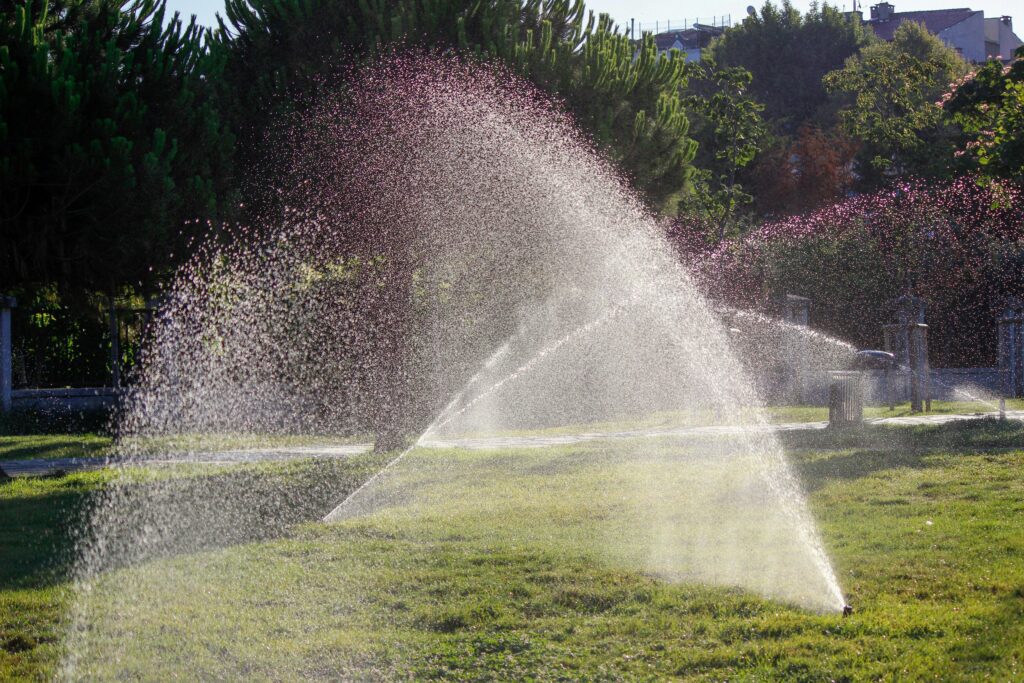
Equally, sprinkler irrigation is also practiced extensively in wheat and maize farms of the Punjab state, where it provides an uniform supply of water even for non-uniform land. Such instances illustrate how irrigation systems can transform farm output with a conservation of valuable water resources.
Advantages of Irrigation Systems
Enhanced Water Efficiency
One of the finest attributes of current irrigation systems is their effectiveness in consuming water. In comparison to conventional flood irrigation, which often causes water loss and runoff, a sprinkler system irrigates the field evenly with minimal loss.
Likewise, a drip irrigation system supplies water to the roots of the plants directly, minimizing evaporation and providing the precise amount of water each plant requires. This accuracy not only saves water but also lowers energy consumed in pumping and distribution, thereby lowering farmer operating expenses.
Efficiency of water use is especially important in arid and semi-arid areas where water is the factor that controls plant production.
Increased Crop Yield and Quality
The better irrigation systems play a catalytic role in the increased crop yield and crop quality. Through the supply of a stable water supply, crops are exposed to less drought or alternate watering stress.
For instance, vegetables, fruits, and cash crops gain the most benefit from a drip mode of irrigation, which provides the root zone with the best moisture level, leading to healthier plant growth.
In the same manner, cereals and grains irrigated with a sprinkler system develop an even germination and growth, leading to increased yield. Farmers have also come to understand that when plants are well irrigated, they become healthier, stems get stronger, and fruits and grains become of higher quality.
Soil Health and Nutrient Management
Irrigation systems are also very important in the sustenance of soil health. Random watering or overwatering will lead to soil erosion, nutrient leaching, and compaction. Drip irrigation systems and sprinklers neutralize these impacts by regulating the timing and amount of water supply.
In addition to this, drip irrigation systems also enable fertigation—the infusion of fertilizers via the irrigation water—so nutrients are directly supplied to the root zone. This conserves fertilizer loss, maximizes nutrient uptake, and promotes soil conservation in a sustainable manner.
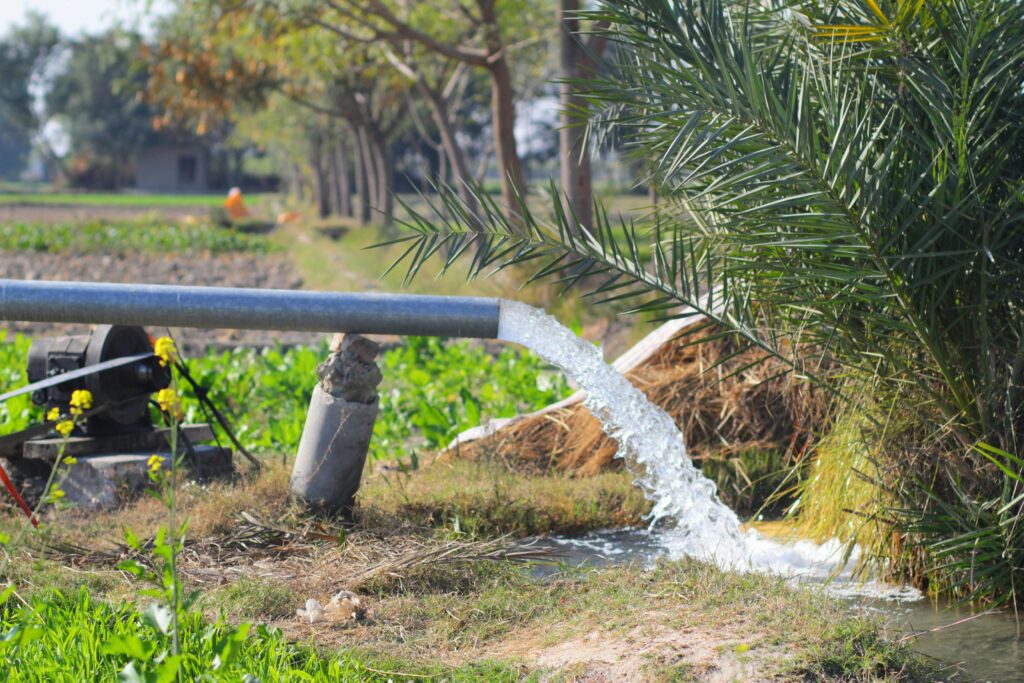
Healthy soils, on the other hand, yield to long-term productivity and reduce chemical interferences.
Techniques of Irrigation Systems: 5 Efficient & Proven Methods with Sprinkler System and Drip Irrigation System
1. Center Pivot Sprinkler System
The center pivot sprinkler system is perhaps the most widely practiced method used in modern irrigation systems, particularly on large-scale farms. The system is controlled by a revolving long arm and sprinklers along the length that revolve around a pivot and water a circular field efficiently.
One of the most appealing features of this system is that it can offer level water coverage on huge acres, and this is ideal for crops such as wheat, maize, and cotton. Sprinkler systems simulate rain in a way that offers uniform water to crops and prevents wastage of water.
Farmers’ field experience is that the center pivot system saves them heavily on labor as it is mechanized and involves very little manual intervention. Further, they can be sensorized to respond on the basis of water flow in terms of soil moisture, crop, or weather.
This accuracy not only enhances crop yield but also saves water—a most precious benefit where rainfall is sparse. Proper field leveling and pivot arm maintenance are necessary to get peak performance, providing durability and system efficiency.
2. Lateral Move Sprinkler System
Another sophisticated sprinkler system method is the lateral move system, with a line of sprinkler pipes on rolling towers that travel laterally across the field. In contrast to the center pivot system centered on a pivot, lateral move systems water rectangular or uneven fields with great accuracy.
The technique is most appropriate for crops such as sugarcane, rice, and soybeans for which equal moisture is a requirement for healthy development. Producers utilizing lateral move systems enjoy tremendous improvement in the areas of uniformity as well as water runoff reduction.
It may also be integrated with fertigation systems, whereby the nutrients have to be delivered along with water to crops in immediate use. Schedule planning of movement and pipe location planning must be well done in order to achieve maximum efficiency.
Incorporation of this type of sprinkler system with soil and weather sensors is done in such a manner that provides the appropriate amount of water to the crops at the right time, which results in increased yield and quality.
3. Micro-Sprinkler Irrigation
Micro-sprinkler irrigation is the integration of sprinkler and drip irrigation systems into contemporary irrigation systems with the advantages of both sprinkler and drip irrigation systems.
Micro-sprinklers discharge small amounts of regulated water over or over low-evaporation soil surface with precise covering of crops with a given amount of water.
The system is efficient in orchards, vineyards, and plantations where soil water within and beyond the root zone should be consistent. What is lovely about micro-sprinklers is that they can irrigate uneven topography and slopes that other sprinklers cannot.
They also prevent soil compaction because the water is sprayed gently and not a heavy forceful spray. Practical advice from agricultural farmers includes frequent nozzle cleaning to ensure that they are free from blockages and placement at strategic points to provide overlapping sprinkles.
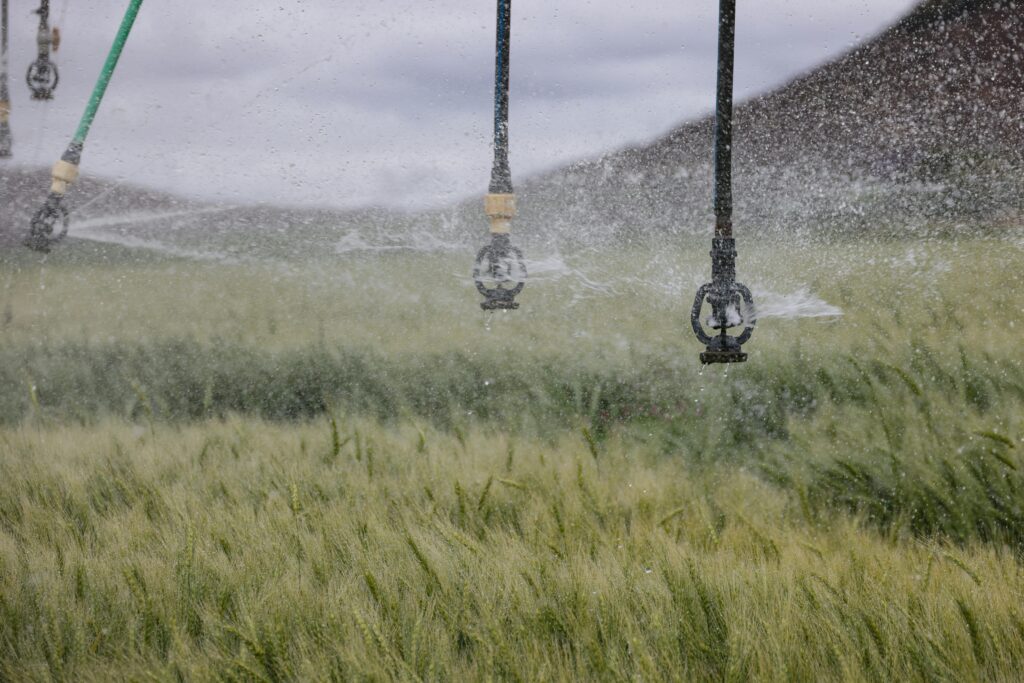
Micro-sprinklers, if used alongside drip irrigation systems, provide a complete package for water use efficiency and a healthy crop.
4. Surface Drip Irrigation System
The drip irrigation system is the most efficient of the newer irrigation systems, especially for water-short areas. Under this system, water is delivered directly to the root zone of a plant by a pipe system, tubes, and emitters in a way that barely any evaporation and runoff occur.
Surface drip irrigation is suitable for vegetables, fruit trees, and row crops where there is a need for precision watering to promote growth and nutrition absorption.
The farmers noted that surface drip irrigation promotes faster growth of the crops, improved health of the plants, and increased yields than conventional irrigation practices.
It is also possible with the system that fertigation can be performed such that fertilizers can be blended with water in a way to improve nutrient uptake at the cost of wastage. Soil water level must be measured for optimum functioning and emitters must be cleaned periodically to avoid clogging.
This technique not only conserves water but also weeds since the water is being provided only where the plants require it.
5. Subsurface Drip Irrigation
Subsurface drip irrigation is the contemporary precision of advanced irrigation technologies. Here, drip irrigation system pipes are embedded underground where they deliver water to the root zone and not leaves.
This irrigation system saves water from loss through evaporation, minimizes disease susceptibility, and provides crops with a steady supply of water even during hot or windy weather. Subsurface drip irrigation is best applied to high-value crops such as tomatoes, peppers, strawberries, and grapes.
Farmers enjoy tremendous returns in terms of water use efficiency, nutrient uptake, and general crop quality. Installation involves planning the spacing, depth, and flow rates of the emitters strategically to meet the needs of certain crops.
Although the initial installation expense is greater than surface methods, the payoff in saved water, increased yield, and decreased labor in the long term is well worth the investment.
In addition, pairing the use of subsurface drip irrigation with soil sensors will allow automatic scheduling of irrigation, and effectiveness, still more so.
Challenges in Using Irrigation Systems
High Initial Investment
Perhaps the most significant disadvantage of contemporary irrigation systems is that they are costly to install. A drip irrigation system or sprinkler system installation requires investments in emitters, pipes, pumps, valves, and control devices.
The capital required for the initial installation is out of reach for farmers who have limited funds or no resources. Although these systems consume less water and increase production in the future, the investment cost deters everybody.
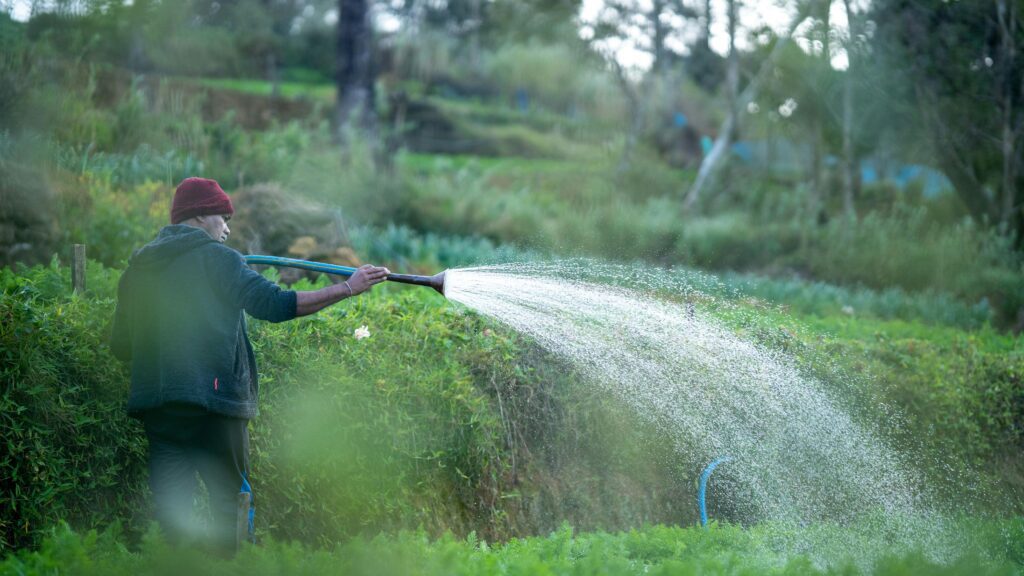
Examples from rural communities indicate that farmers delay investing in such systems despite knowing the advantages.
Water Quality Issues
Low-quality water can make a sprinkler system or drip irrigation system ineffective. Excessive dissolved salts, suspended matter, or biological contaminants clog emitters, cause pipe corrosion, and impair the efficiency of a system.
For instance, in borewell-fed water or hard water regions, farmers are required to suffer from repeated clogging of drip emitters, which need extra filtration and treatment.
Routine pipe flushing, good filtration equipment, and routine water quality tests are a bare minimum. Farmers utilize sedimentation tanks and chemical treatment for antiscouring. High water quality problems maximize irrigation efficiency and system longevity as well as sustainable crop production.
Power Dependence
Most of today’s irrigation is dependent on electric or diesel pumps forcing water via pipes and thus is subject to a consistent power supply or fuel. This can become very much a problem in rural areas where there is no consistent electricity or fuel shortage.
Disruption in irrigation timing will stress the crop and decrease yield if water supply is cut off. Practical interventions comprise the adoption of solar-pump-driven pumps, gravity irrigation, or stand-by power.
For example, the development of a sun-powered drip irrigation system can provide uninterrupted supply of water with savings in long-term energy usage. Irrigation based on peak energy time availability can also decrease breakages.
Crop-Specific Adaptation Challenges
All plants do not react similarly to all irrigation systems. Vegetable and fruit crops would thrive on drip systems and cereals and grains on sprinkler systems. Misuse of irrigation technology results in overwatering, under-watering, or unequal growth, devastating the health and productivity of crops.
Farmers should know about a specific crop’s water requirement, growth phase, and spacing for optimum use of a system. Field testing, extension service, and agronomist guidance can assist farmers in choosing the correct system and maximizing its performance to gain maximum productivity and efficiency.
Solutions and Best Practices to Effective Irrigation Systems
Good System Design and Layout
Good layout is the largest component of any successful irrigation system. With drip and sprinkler irrigation systems, there is careful planning so that water can be uniformly distributed, minimize wastage, and ensure the highest crop yields.
With sprinkler systems, the spacing of nozzles, pipe size, and water pressure must be determined on the basis of crop type, soil type, and field slope. In drip irrigation systems, emitter spacing, discharge, and position must be consistent with the crop’s root zone and water requirement.
Better efficiency is achieved by farmers in terms of pre-designing their fields before they are installed and with the help of irrigation professionals. For instance, in tomato cultivation, placing emitters near the main root zone and having them distributed evenly in a grid pattern allows each plant to receive adequate water.
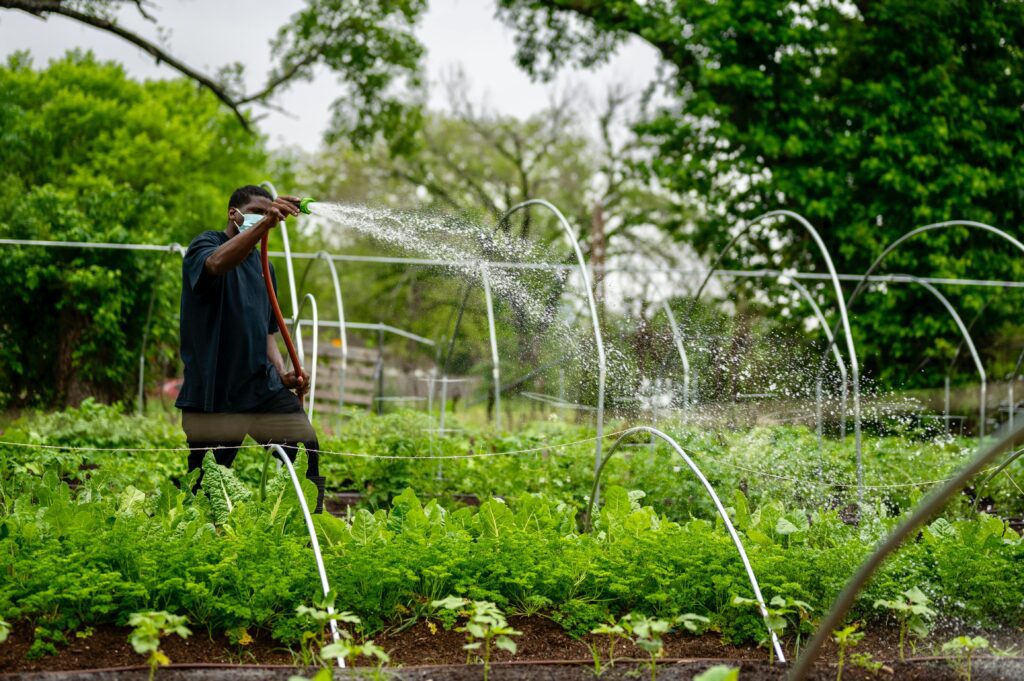
Periodic monitoring of the design based on plant growth and seasonal adjustments is also advantageous in keeping the system up to its desired level.
Maintenance and Monitoring
Maintenance must be performed to avoid system collapse and ensure maximum long-term performance. Sprinkler systems must be checked for sprinkler heads, moving parts, and pipes to avoid leaks and misalignment.
Drip irrigation systems must be flushed regularly to eliminate sediment buildup and avoid emitters clogging. Measurement of water pressure, flow rate, and soil moisture allow farmers to identify issues and modify prior.
Real-world advice is to schedule bi-weekly check-ups of the system, keep spare parts such as nozzles and filters in hand, and record maintenance procedures.
Farmers who have consistent monitoring usually end up with evenly developed crops, less water loss, and longer system life, thus being able to maximize return on investment on irrigation systems.
Training and Knowledge Sharing
Lastly, training of the farmers with knowledge and skills is most likely to be the most viable answer for maximum use of irrigation systems. Farm demonstrations, training programs, and workshops accustom the farmers to hands-on experience of system installation, management, and maintenance.
The sharing of information also equips farmers to implement improved practices like fertigation by drip irrigation or using solar pumps along with sprinklers.
Extension services at the local level and cooperative societies play an important role in sharing best practices so that contemporary irrigation systems provide economic as well as environmental advantages.
Active participation of farmers in training programmes will ensure maximum utilization of water, cost-effectiveness, and increased production.
FAQs
1. What are irrigation systems, and why are they important?
Irrigation machinery or equipment is by which water is delivered to crops in a manner that is controlled and efficient. Irrigation equipment plays a vital role in ensuring uniform soil moisture, enhancing crop production, and protecting water resources.
New irrigation equipment like the sprinkler irrigation system and drip irrigation system enable farmers to make efficient use of water, save soil from erosion, and enhance nutrient uptake, thus being essential in sustainable farming.
2. Why is a sprinkler system effective?
A sprinkler irrigation system is effective in that it rains water on the crops in a manner very similar to rain in nature. Water is pressurized into the pipes and sent out through sprinklers or nozzles, which rain down onto the field.
It provides uniform coverage, conserves water, and can be used to irrigate any crop such as cereals, vegetables, and orchards. Sprinkler systems come in automated systems which can be programmed to function with sensors for the soil according to the water needs of the crop.
3. What are the advantages of a drip irrigation system?
Drip irrigation system supplies water to roots of plants via pipes, tubing, and emitters with minimum evaporation and runoff. Drip irrigation will enhance crop growth, minimize weed pressure, and enable fertigation—providing nutrients from the water source directly.
Drip irrigation systems are most appropriate for fruit crops, vegetables, and high-value horticultural crops under conditions of water scarcity.
4. What are some of the farmers’ concerns over irrigation systems?
Agricultural producers employing more complex irrigation systems will be more likely to encounter problems of high initial capital investment, maintenance needs, water quality problems, and energy dependency.
Sprinkler systems will contain moving parts that need to be serviced, whereas drip systems become plugged with emitters if the water is not properly cleaned. Proper training, system design, and water treatment can be used to fight against problems.
5. What are the methods of maximizing irrigation system efficiency?
For maximum efficiency in irrigation systems, farmers need to opt for efficient system design, maintenance, water quality management, and technology adoption.
A combination of sprinkler or drip irrigation system and automation, soil moisture monitor sensors, and fertigation methods provides the maximum yield out of water, increased crop yield, and lower expense. Training and technology transfer also lead to long-term success with new irrigation systems.
Conclusion
New irrigation technology has transformed agriculture by allowing farmers to employ the appropriate machinery to efficiently control water, increase crop yield, and enhance sustainable agriculture.
Techniques such as sprinkler system and drip irrigation system are precise, adjustable, and conserve water, thus very essential for small-scale and commercial agriculture.
From center pivot sprinklers over large fields to subsurface drip irrigation with direct supply of water to roots, each of them has their established advantages which can be modified to suit various crops and topography.
With each issue of initial high cost, maintenance, water quality, and power dependency, all these are easily overcome with good system design, maintenance, water treatment, and inclusion of automation and sensors.
Practical knowledge sharing and farming individuals ready to learn are best positioned to achieve maximum efficiency in irrigation systems, minimize water loss, and ensure improved quality of produce.
With increased water shortage and increasing food requirements in a time of modernity, the incorporation of sophisticated irrigation systems is not a choice but a requirement.
With the application of tested practices, water use measurement, and investments in technology such as sprinkler system and drip irrigation system, farmers will have higher productivity, lower cost, and eco-friendliness.
Act now by determining the water requirements of your farm, researching the proper irrigation systems, and investing in the technologies appropriate for your soils and crops.
Modern irrigation systems are an investment in the longevity of your farm’s profitability and the world’s water resource—a sustainable and profitable future for agriculture.
